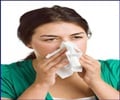Over 1,000 retail clinics have been established inside pharmacies and grocery stores across the United States, offering treatment to minor illnesses like sore throat
Over 1,000 "retail clinics" have been established inside pharmacies and grocery stores across the United States, offering treatment to minor illnesses like sore throat.
Retail chain operators proposed that the new clinics would improve access to medical care among uninsured or underserved populations. However, these clinics have been opened more often in higher-income areas that are less likely to be classified as medically underserved, according to a new study from the University of Pennsylvania School of Medicine published in the May 25 issue of Archives of Internal Medicine."There has been a rapid rise in the number of retail clinics across the United States, but this growth is not evenly distributed across communities," says Craig E. Pollack, MD, MHS, an internist and Robert Wood Johnson Clinical Scholar at Penn. "Poorer neighborhoods are less likely to have access to these clinics."
By combining mapping software with Census data and a listing of nearly 1,000 retail clinics across the nation, Pollack and his co-author, Katrina Armstrong, MD, MSCE, an associate professor of Medicine and Epidemiology and chief of the division of General Internal Medicine, found that census tracts with retail clinics had a lower population of black residents, lower poverty rates, and higher median incomes than census tracts without retail clinics.
Housed in stores including Wal-Mart, Target and chain pharmacies like CVS and Kerr Drugs, retail clinics offer walk-in appointments, often on weekends and evenings, and the visits generally cost less than paying out of pocket for similar services at a doctor's office or emergency department. But the Penn authors say these "convenience" factors may not help disadvantaged populations if clinics are located too far away to be reached easily.
"We know that people living in poorer areas are less likely to have health insurance, less likely to have a regular source of medical care, and may have transportation problems that keep them from getting to the doctor," Pollack says. "By tending to locate in richer neighborhoods, retail clinics may not be meeting their full potential to help address these problems."
Previous research shows that a third of retail clinic patients pay for their visits out of pocket, and more than 60 percent of patients report not having a primary care provider. Some opt to pay for after-hours, no-wait care because it's more convenient, even if they have insurance. The new findings suggest that instead of filling an unmet medical need, placement of clinics in more advantaged neighborhoods may act as an adjunct to existing, more traditional medical care – perhaps by staying open later than nearby doctors' offices.
Advertisement
"There may be a real opportunity to put up clinics in underserved areas where there's already supermarkets and drug stores" Armstrong says.
Advertisement
Source-Eurekalert
RAS









